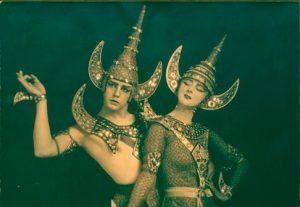A groundbreaking exhibition, titled “Cultural Exchange Along the Silk Road: Masterpieces of the Tubo Period (7th–9th Century),” opened in Dunhuang in China’s Gansu Province on 2 July. Jointly organized by the Dunhuang Academy and the Pritzker Art Collaborative, the exhibition is intended to illustrate the dynamic and complex cultural landscape when Tubo, more commonly known as the Tibetan empire in English, flourished on the Silk Road.
In the spirit of the Silk Road, the exhibition brought together 140 artifacts from 31 international museums and cultural institutions. Among them, the Abegg-Stiftung in Switzerland, the Art Institute of Chicago, the State Hermitage Museum in Russia, the Al Thani Collection in Qatar, the Hirayama Ikuo Silk Road Museum in Japan, and more than 20 Chinese counterparts ranging from the Palace Museum to the Ngari Prefecture Zhada County Cultural Relics Bureau in the Tibet Autonomous Region, alongside several private collections. Despite the remoteness of the venue, people flew in from across the world to celebrate this great occasion of international collaboration and cultural exchange.
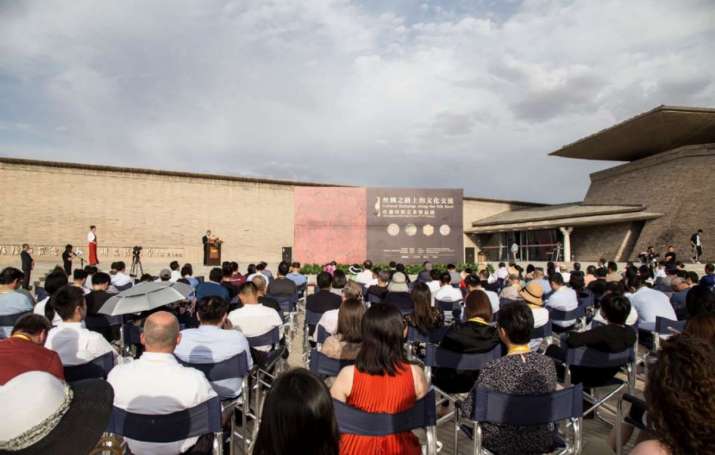
While most people expect to see only Buddhist art in an exhibition focused on Tibet, the Dunhuang exhibition aims to enrich the current narratives of Tibetan history and culture. Curator Dr. David Pritzker, while recognizing Indian and Chinese influences on Tibetan Buddhism, and the influence of the Chinese Tang dynasty (618–907 CE) on the administration of the Tibetan state, made a special effort to gather objects from other cultures, including Bactrian, Greek, Kashmiri, Sassanian, Sogdian, Turkish, and Uyghur. The purpose is to enable the audience to see Tubo’s eclectic cultural context with their own eyes and also to see how Tibetans at the time transformed varied ideas and motifs into something uniquely Tibetan.
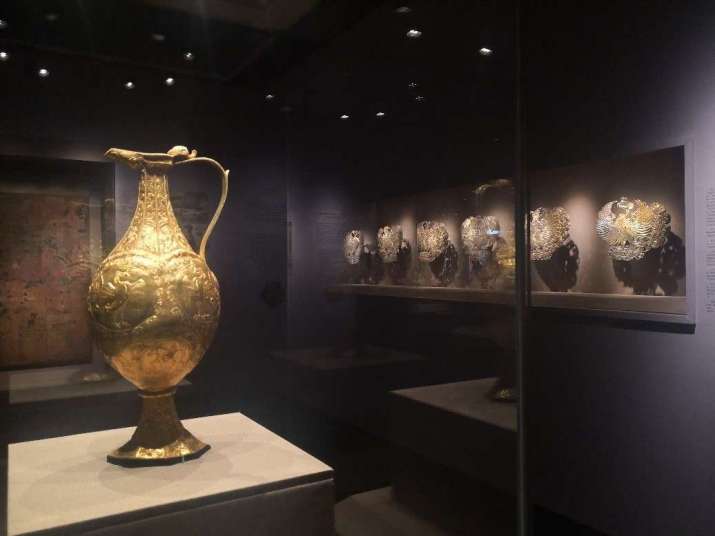
Among the many outstanding examples, Dr. Pritzker highlighted a majestic gold ewer as it was where his vision for the whole exhibition began. Many years ago, after examining a wide range of material culture along the Silk Road and—albeit scarce—contemporary texts, Dr. Pritzker eloquently argued that the ewer was made by a Sogdian artist for the Tubo court. He traced how its shape evolved from classical Iranian prototypes, how the iconography was informed by both Central Asian and Tang Chinese imagery, and how it retained a distinctive Tibetan flavor, such as the stylized wings of a phoenix motif and the turquoise inlay.*
In the same exhibition space, Dr. Pritzker managed to juxtapose several similar objects: a parcel-gilt silver ewer of Greco-Bactrian origin unearthed in a tomb dated to 569 in Ningxia Province; a Chinese stoneware ewer from the sixth to the early seventh century; and a parcel-gilt silver ewer from Central Asia dated to the eighth century. It becomes clear that the ewer mentioned in the previous paragraph is a testament to the artistic and technical virtue of Tubo art. Fifty centimeters high, it is the largest known ewer of its kind, demonstrating extremely refined repoussé and intricate turquoise inlay, which is even more prominent in another Tubo gold ewer in the exhibition, as shown below.
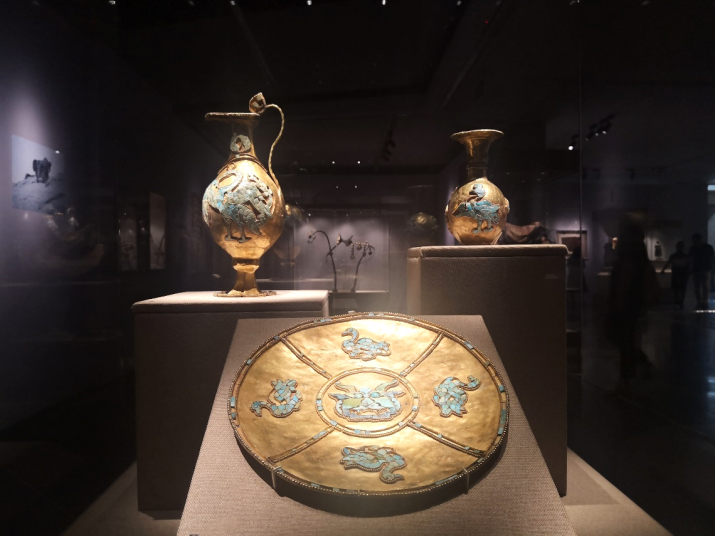
Compared with their neighbors, the Tibetans rose to the historical stage rather late, but the culture they created is nevertheless awe-inspiring and authentic. Such phenomenon, “a distinct expression of the international culture of the time,” is what has minted Dr. Pritzker’s fascination for the Tibetan and Himalayan region since childhood. At the age of four, Dr. Pritzker visited the Himalayas for the first time with his siblings and parents Margot and Tom Pritzker. Dr. Pritzker and his parents would go on to co-found the Pritzker Art Collaborative. Since then, he has returned almost every year, along the way obtaining a PhD in the textual history of Tibet at the University of Oxford. For the past 10 years, Dr. Pritzker has also been deeply involved with the Himalayan Art Resources website as a curator and a board member.
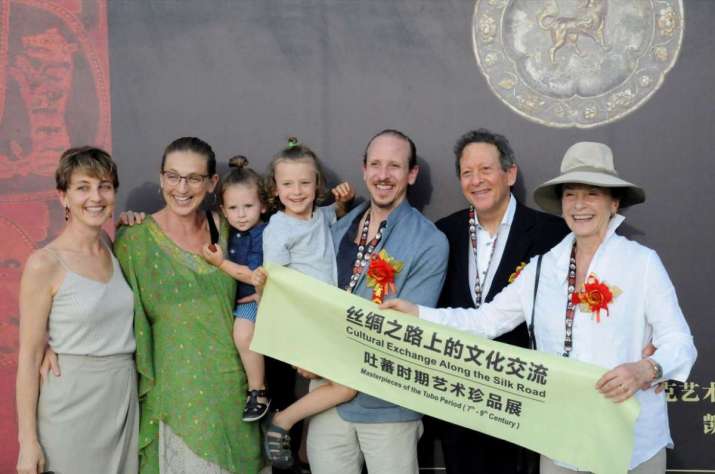
Drawing on his experience and knowledge, Dr. Pritzker aspired to present the best objects that would excite the imaginations of the audience. The diverse array of exhibits was selected based on their aesthetic quality as well as historical importance. To ensure the depth of scholarship of the exhibition, an interdisciplinary approach was adopted. Dr. Pritzker explained that textual studies enable critical interpretation, anthropological fieldwork sheds light on ancient traditions, and archaeological discoveries provide anchor points among a confusion of traditions and material culture along the Silk Road.
Moreover, to add to the “freshness” of the exhibition of complex themes, Dr. Pritzker consciously included beautiful objects, to which, he observes, people are “naturally drawn.” However, it is not just about visual appeal. Sometimes an image is more powerful in unravelling intellectual problems. As we walked on, Dr. Pritzker drew our attention to a set of horse trappings dated to the Tubo period and a classic earthenware horse with sancai glaze from the Tang dynasty in the next gallery. While people rarely find anything new about Tang sancai horses nowadays, Dr. Pritzker elucidated that the earthenware horse was their model for reconstructing the armature of the 81 pieces of gold fixings and he positioned these objects to be in a visual dialogue with each other.
Nonetheless, in the constant exchange that occurred along the Silk Road and with the overwhelming amount of material that exists around the world, it can be difficult to distinguish and understand local styles. To achieve that requires a discerning and educated eye. Seeing tends to be taken for granted, especially as the art world today is deviating from appreciation for quality and craftsmanship. To Dr. Pritzker, however, seeing is an education, just like training one’s ear for music or fine-tuning one’s palate for cuisine. As a teenager, guided by a family friend and art historian, David would make object books on diverse genres, and test his eye in museums without reading the captions. Such formative experiences developed into one of his missions for the exhibition: “to bring material culture to text, and to bring text to material culture.”
Starting with the prehistory of Tibet, the exhibition places an emphasis on the royal life of the Tubo court. After all, as Dr. Pritzker reminded us, Tubo art was made for the court and, moreover, as Tibetans were semi-nomadic, their court was moving too. Therefore, Tibetan royals found their own expressions of palatial luxury. Regalia were carried around on horseback, monumental silk brocades were detached and hung again in new encampments, and figures and animals were depicted in full action and charged with energy in style. Much of Tubo art was intended to flaunt imperial prowess at royal activities, such as banquets or hunts.
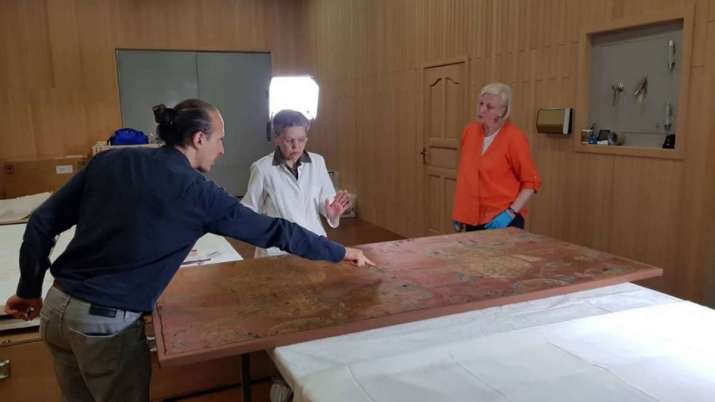
The exhibition ends with the theme “Tibetan Assimilation of Buddhism,” and there one finds impressive sculptural art from India, Kashmir, Nepal, and Tibet, dated to the seventh to ninth centuries. One of the rarest pieces is the statue Seated Maitreya with Bodhisattvas and Royal Adorants, cast in brass and inlaid with silver. Based on the inscription at the bottom, its creation can be traced to the Gilgit kingdom and precisely dated to 715 CE. In terms of Buddhist art, just outside of the exhibition hall, more than 40 caves were excavated by Tibetans between 781 and 848 CE when the city of Dunhuang fell under the control of Tubo. Dunhuang is internationally acclaimed for preserving 492 caves of Buddhist wall paintings and clay sculptures dated between the fourth and 14th centuries which, according to UNESCO, are of “unmatched historical value.” Such a connection adds significantly to the allure of the exhibition.
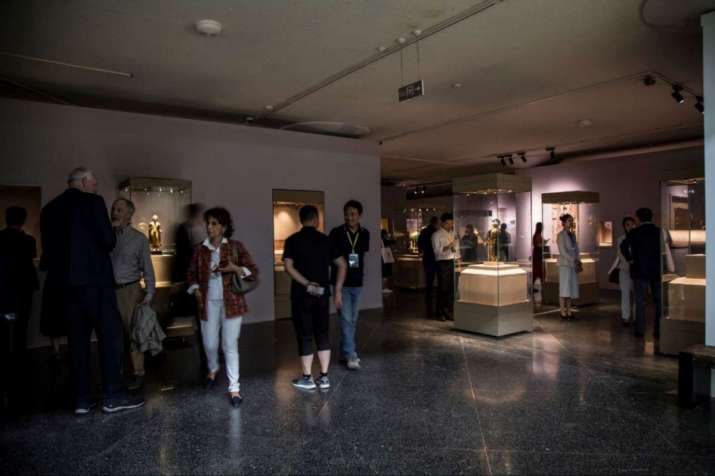
Marking the 40th anniversary of Sino-American diplomatic relations, “Culture Exchange Along the Silk Road: Masterpieces of the Tubo Period (7th –9th Century)” will run until 22 October at the Cultural Relics Conservation, Research and Exhibition Center of the Dunhuang Caves. Dr. Pritzker is currently working on the exhibition catalogue, which is to be published in October next year. Meanwhile, as the director of the Pritzker Art Collaborative, he will carry on the organization’s mission through more cultural initiatives to “inspire a robust and inclusive cross-cultural dialogue that encourages new and dynamic interpretations of Asian art, while creating multiple opportunities for engagement with individuals across the globe.”
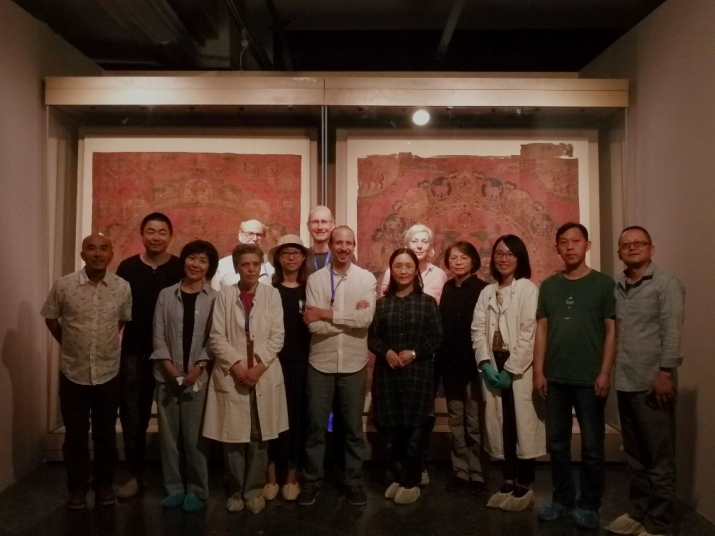
* See David Pritzker, “Allegories of Kingship: A Preliminary Study of a Western Central Asian Gold Ewer in the Royal Court of Tibet”, in Interaction in the Himalayas and in Central Asia. Processes of Transfer, Translation and Transformation in Art, Archaeology, Religion and Polity, eds. Eva Allinger et al. (Austrian Academy of Sciences, 2017), 105–25.







